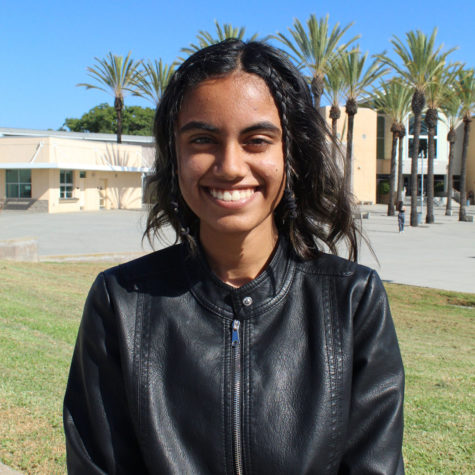Return to in-person school escalates COVID-19 anxiety
September 17, 2021
A year ago, Westview was a ghost town. Students and teachers, confined to their screens, rarely ventured out of their homes. It became a new normal, one brought about by the dangers of a pandemic.
For many, COVID-19 began on March 13, 2020. That day, now embedded in memory, was one that most people couldn’t see coming. Students and teachers alike were suddenly placed in a new reality, navigating through the unfamiliar environments of Zoom and digital learning while fearing for their safety.
However, for chemistry teacher Scott Halander, this worry had begun months before. Since he has Taiwanese in-laws who had already gone through SARS, a contagious respiratory illness also caused by a coronavirus in 2002, he has long understood the dangers of airborne viruses, particularly ones with high infection rates.
“My wife’s family watched media from Asia,” Halander said. “They were already freaking out because [the pandemic] was all they were concerned about, and rightfully so.”
Once alerted of the first communal transmission in Washington and San Francisco in late January, Halander feared the inevitable devastation, like those of previous pandemics.
Now, over a year later, while some have dismissed the danger with COVID-19, many others, either at risk or in contact with, cannot afford to do so. The return back to in-person school has only amplified those worries for Halander.
“I don’t regret coming back, but I am fearful for my safety and my family’s safety,” Halander said, “I have a son who’s not vaccinated because he’s too young, so that’s a big concern.”
Halander has relatives and friends who got sick, and knows friends whose parents or relatives have died due to COVID-19. Thus, now that the students are back, he believes further measures should be taken to prevent hospitalizations and sickness at Westview, such as a replacement of the current ventilation system, mandated N-95s or equivalent masking, required vaccinations, and minimized exposure through the elimination of homeroom.
“The risk is there,” Halander said. “I’m seeing so many people oblivious or in denial that there is risk, both students and staff. I get some students that don’t wear a mask [in class]. and I see certain people walking around campus who don’t wear a mask.”
Similarly, JJ Siu (11) is worried for his own health.
“I try to keep my mask on at all times, and try not to take it off too much to eat,” he said. “What’s really scary is when you go to the cafeteria, and then you look around and see bunches of people with no mask on.”
Siu has asthma, which puts him at high-risk for COVID-19. This past year he’s had to make personal sacrifices, including opting out of playing tennis for the school team, in spite of his love for the sport, due to health concerns with the virus.
The return to school has certainly induced anxiety for Siu and others in his position, with the delta variants and masses of students and staff at school posing an even greater threat.
“People around me don’t seem to care very much, probably because [COVID-19] doesn’t really apply to them, like they haven’t gotten it or known anyone seriously affected by it,” Siu said. “I think I’m just frustrated at the fact that people don’t seem to care that much about something that has taken over 650,000 lives.”
While Siu recognizes the difficulty in socially distancing during lunch, especially with the new guidelines prohibiting students from eating indoors, he says he tries to eat in more secluded places.
He also believes that increased regulation on the school’s part is necessary to prevent an outbreak.
“Spreading people out more would be helpful,” Siu said. “Students are going to congregate together since people like socializing, and I don’t think that’s their fault.”


